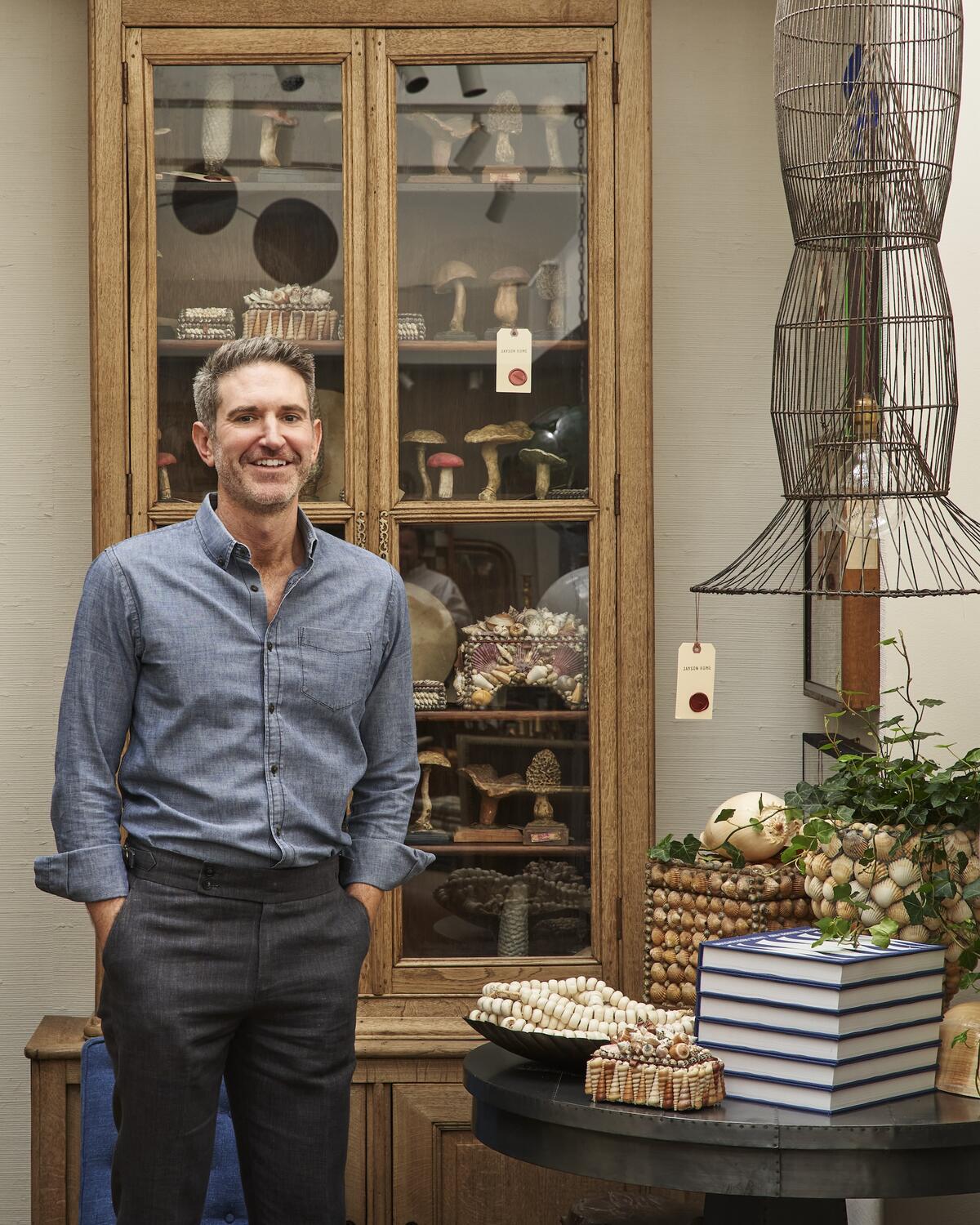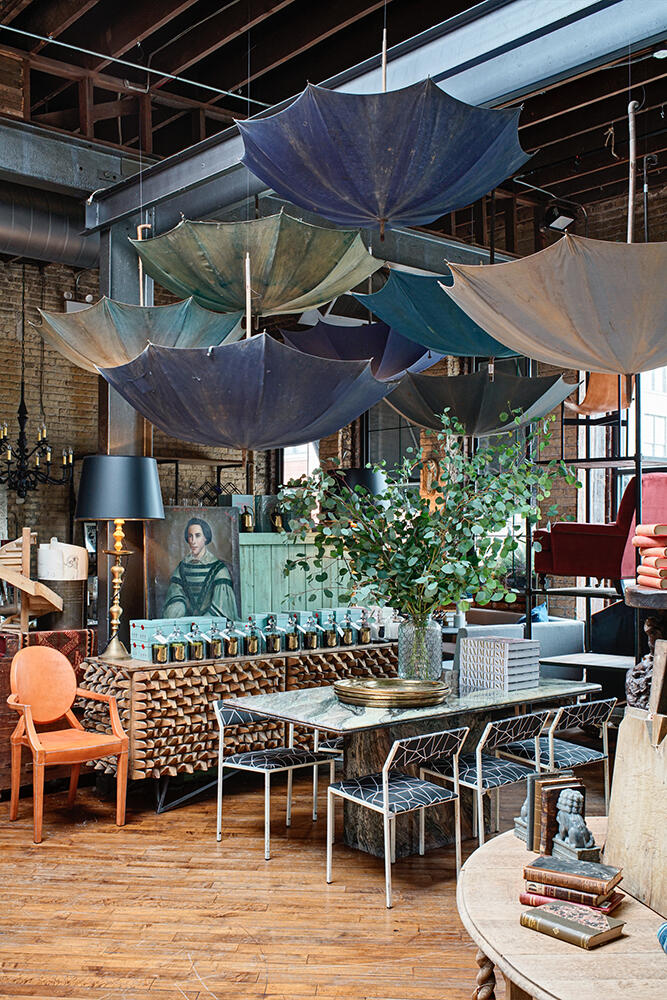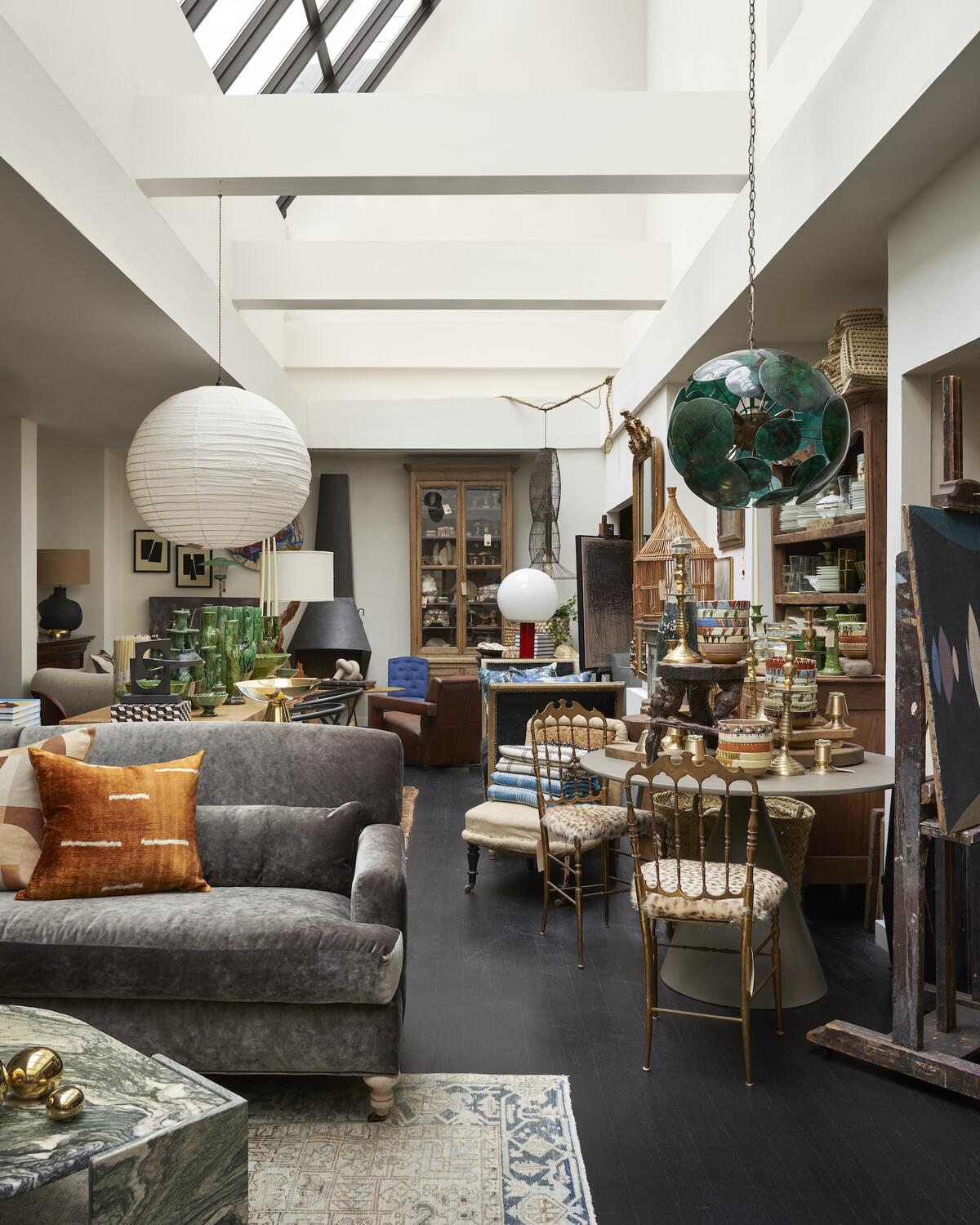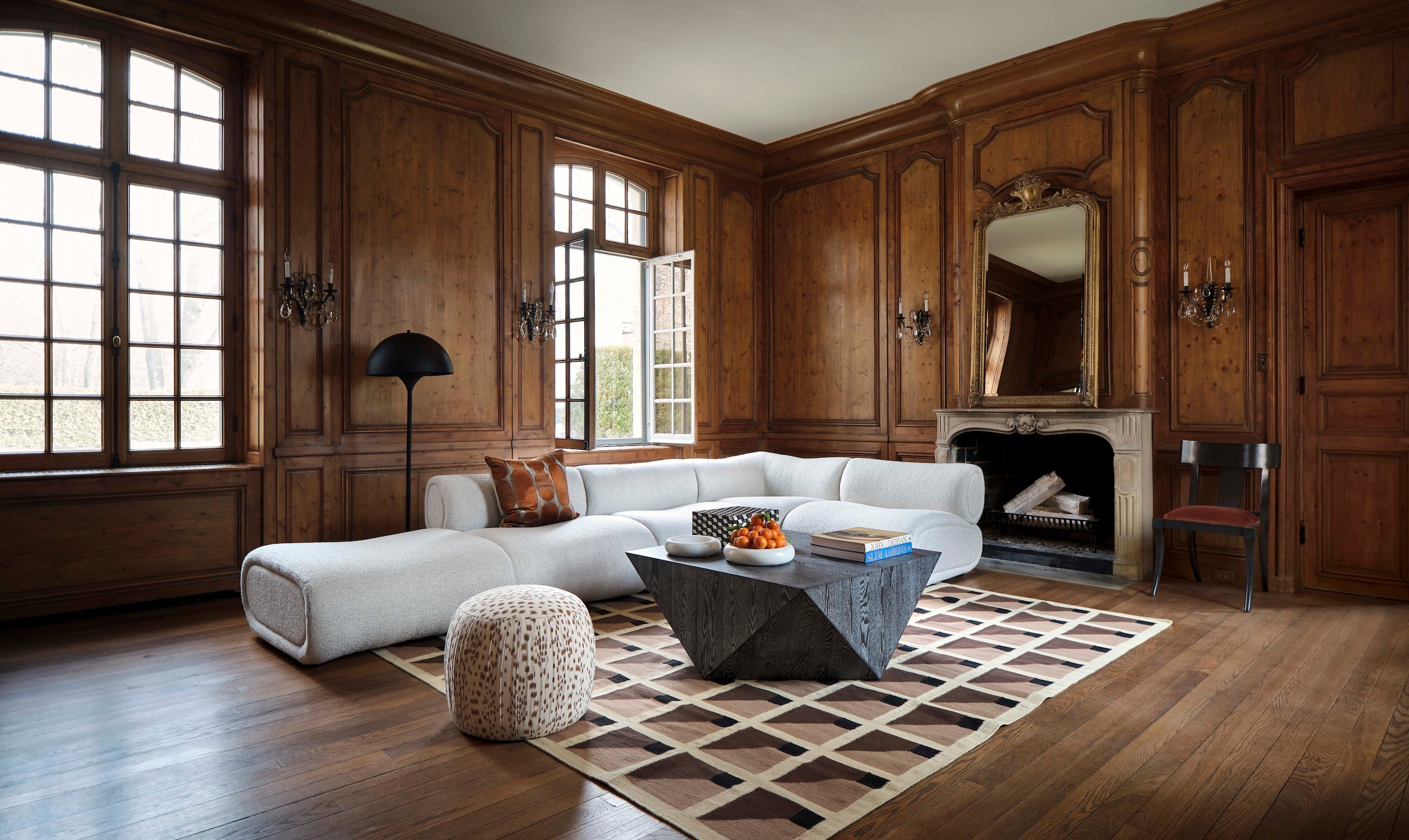In Business of Home’s series Shop Talk, we chat with owners of home furnishings stores across the country to hear about their hard-won lessons and challenges, big and small. This week, we spoke with Devin Kirk, the chief creative officer of Jayson Home in Chicago.

Located in a century-old converted warehouse, Jayson Home opened its doors 30 years ago in the city’s Clybourn Corridor shopping district, where it offers antique and modern pieces, as well as proprietary items, that are sourced and produced around the world. (The store’s owner, Goltz Group, also operates three other design businesses in the neighborhood, including the largest picture-frame store in the country.) This summer, the decor store has taken on a residency in Manhattan, on the seventh floor of Bergdorf Goodman. The pop-up, which runs through August 19, features an oft-replenished tableau of Belgian furniture, French chairs, African stools, and other vintage pieces and art arranged in what the brand calls a “maximalist wonderland.”
Ahead, Kirk discusses Jayson Home’s history, the nuances of product development and sourcing, and how he designs a feast for customer eyes.
How did you land at Jayson Home?
I started here in 2003 when I was 23 years old. In high school and college, I worked for the Gap during the Mickey Drexler years, and I’ve always loved retail. When I found Jayson Home, it was obviously something really special—this celebrated Chicago destination for people in the know. I was in the right place at the right time, and the company’s grown quite a bit, along with my career.
I started in sales and was also doing the receiving and claims, so I had some insight into dealing with vendors and how orders were coming in. [From there] I managed our furniture department, and then got into buying and sourcing.
Our business is interesting because we’re really one store. We’re still a neighborhood destination. We have customers who come in every week, so when we’re buying, we have real customers that we know in mind. Figuring out how much stuff we need, and when we need it, was an important part of my early role.
At this point, I’m the chief creative officer. I oversee all of the creative aspects of the business in terms of product marketing. We just did this Bergdorf Goodman installation, and I was there all week with our team installing the vignettes. It’s very hands-on, but it’s also big-picture thinking about what we want to achieve, where the business is going, the categories that we’re developing. It’s a lot of travel, a lot of product development. I always say I’ve got the best job in the world—it’s a dream to have my hands in all these different pots.
Tell me a bit about the history of the store. Has the ethos and style stayed the same over those years?
The Jayson Home brand evolved out of Artists Frame Service, which our owner, Jay Goltz, started. He had all these people coming in for custom framing, and they’d be waiting to meet with a salesperson. He thought, “OK, we should have accessories or things for the home.” That was the birth of the business. It was just across the street from where we are currently located. The original kernel that remains is we have things from all over the world that you can’t get anywhere else. We have artisan-made products, and a certain [level] of quality.

What is the vibe of the store? How is it arranged?
It’s not really set up in rooms, but it flows. It’s more like suggestions of environments. It’s not super literal. That carries over to our catalog as well: We’re not doing full-on interior shots; it’s more ways that things look interesting together. I think we’re serving interior designers a lot with that, [as they] have the ability to pull those things apart and take what they need. For a consumer that is more educated and design-focused, it’s a really magical experience.
On my first day here, Jay said, “This is Disneyland for grown-ups.” It’s a real escape. People come in and forget about their troubles. You can see it in their eyes—they just get lost. It’s a feast for the eyes. Everywhere I go around the world, I’m trying to find the best stores, to get inspired myself, and it’s harder and harder to find places like this. When you do, your heart races and it just feels good. We’re catering to people like me who love to shop. We’re not pushy, but laid-back in our sales approach. People seek us out when they’re in Chicago.
Who is the typical customer? How much of it is trade?
It’s about one-third trade. We don’t get tons of foot traffic. We have a garden center that’s part of the business in the summertime that’s really beautiful, so that gets us a little more neighborhood traffic. We do Christmas trees at Christmastime. But people usually come here with a purpose, or we’re on their list. That’s great, because it’s a place they can come and spend time.
Is there a certain category that you’re known for, or something that customers seem to gravitate toward?
The antiques and vintage are super important. Even in the last few years, that’s been growing crazy for us, because I think it’s hard to find the breadth of assortment we have. We are pretty good about having accessible price points: We definitely have some splurges, but there are good workhorse pieces.
What’s the sourcing process like, and how involved are you?
We travel the world every year—everywhere but Antarctica—going to trade shows or working with factories and artisans. It’s taken a long time, but we’ve developed resources in all our key areas. The sourcing is sometimes product development, sometimes finding artisans, and maybe doing a slight tweak [of their product] or figuring out what would work best for us. We do a lot of upholstery here [in Chicago]. It’s a little bit of everything.
What’s a vendor relationship that’s particularly dear to you?
A favorite is John Derian. That’s just a great company and a great guy. He’s lovely to work with, reliable, making a quality product. You know what you’re going to get. They protect our territory. That’s high on my list of favorites.
What is your favorite category to work on?
The vintage and one-of-a-kind items are so fun to buy. To go to flea markets, especially in France and Italy, and wake up at the crack of dawn and hunt those things out—the real needle-in-a-haystack moments, they just never get old.
I also love product development. We’re doing tons of product development on furniture and accessories, and [I’ll] have a kernel of an idea while I’m watching a show or looking at a book like, “That would be cool bookends.” We’ll meet internally, flesh out those ideas, get samples and then tweak. It’s very satisfying to have a thought like, “Oh, it’d be cool if we had some brass pyramids.” Over the course of a year, we developed that product, and we have them now and customers love ’em.

How important is e-commerce to the business?
It’s super important, because we’re doing a lot of direct e-commerce business. But locally, more and more people are coming in and then going online to place their order. Our website is important to us. We’re proud of it. It’s very functional and easy to shop. We put almost a hundred percent of our merchandise on there, so even small vintage items end up on the site. We try to create content that’s interesting for people and visually beautiful and gives them a reason to come to the site and see what’s new.
Tell me about the residency at Bergdorf Goodman.
It was on my vision board for many years. As we emerged from Covid and all the supply chain [issues] from that time, I was thinking about how we could do something fresh to activate our business. The idea of Bergdorf came to mind because they house these installations for months at a time, so that made a lot of sense, and they were open to the idea. [The display] represents most of the categories that we offer. It’s pretty heavy on vintage, since that is such a draw.
[Bergdorf is] obviously the pinnacle of luxury retail, and this loft space we’re in is really inspiring. It’s got skylights, and it feels like you’re in an artist’s studio. That got our wheels turning on the concept; our inspiration was this idea of an artist’s loft or home, but for sale—an immersive shopping experience that was beautiful, very photogenic and shareable. It felt like something that Bergdorf hadn’t done before, either. I think for their customers it feels fresh and different, so it catches your attention.
Is there a desire for other relationships or events like this in the future?
For sure. This works really well for us, so it makes sense to hit more areas of the country.
What’s your favorite kind of day at work?
When we’re on location, our whole team is moving mountains to get beautiful photography, and it uses all of our resources. Everyone on our team has to really stretch. When we get those shots and look back at what we did, we feel proud about what we accomplished. I think people who see the images just see pretty pictures and don’t realize how much work goes into them, but it takes a lot, and it feels good to know it was a job well done.





























